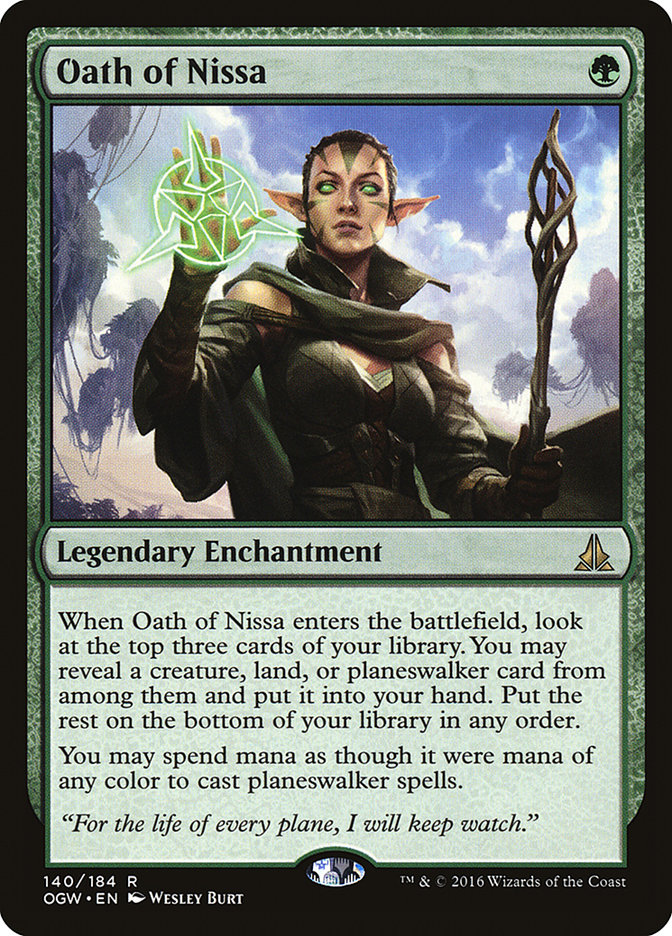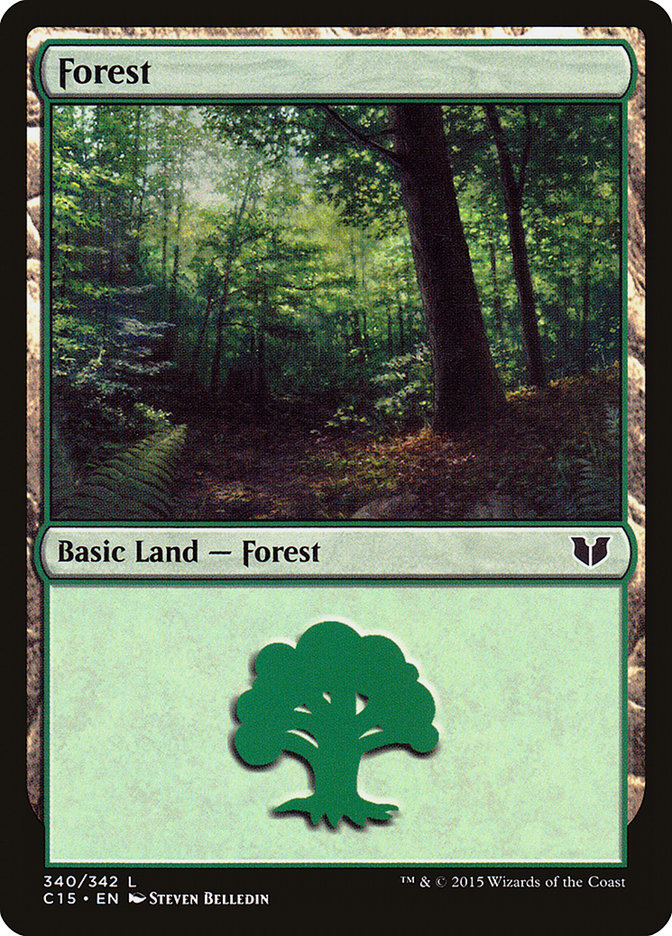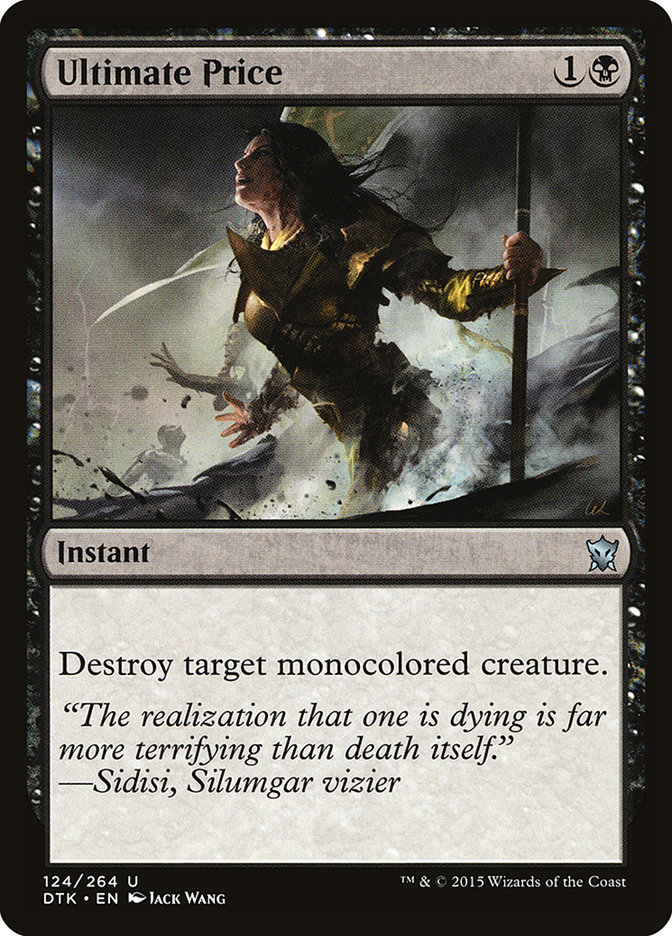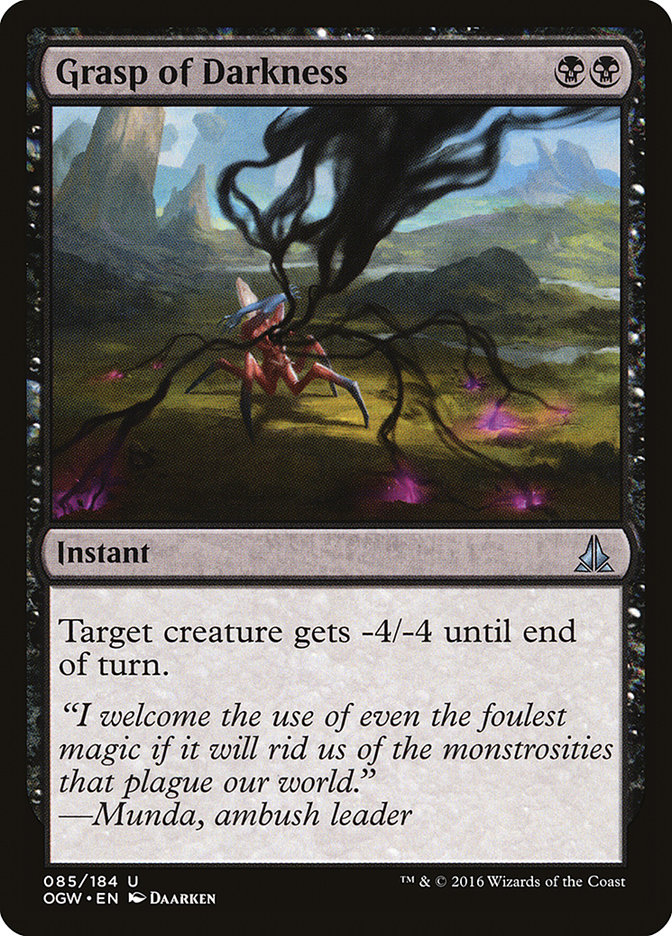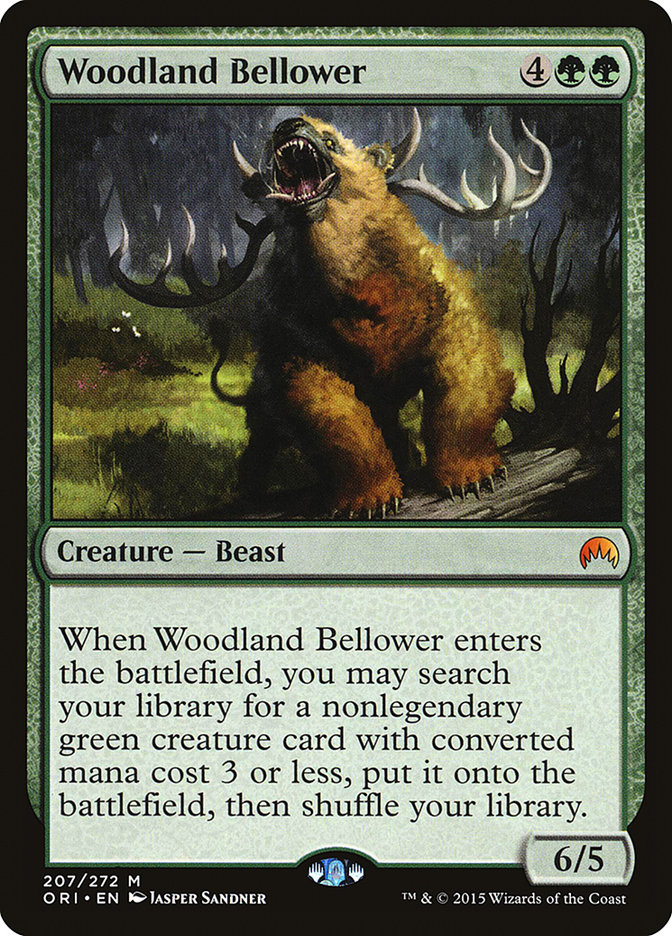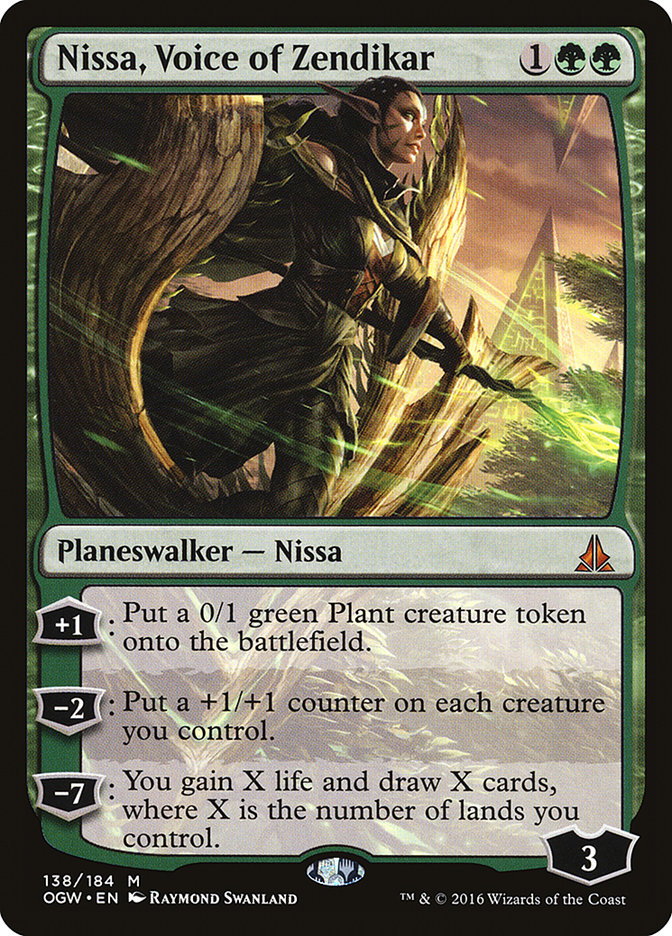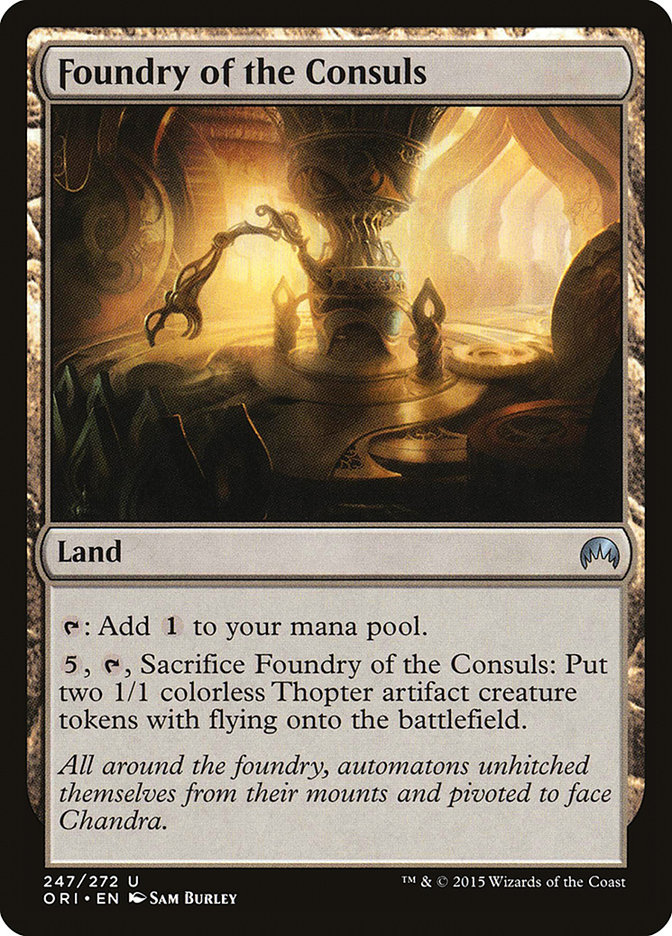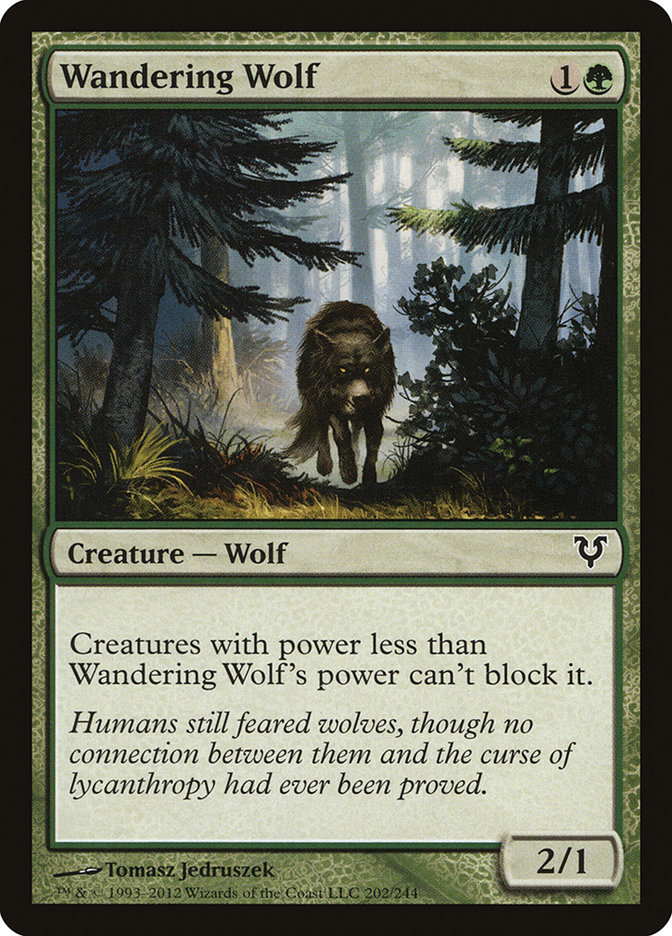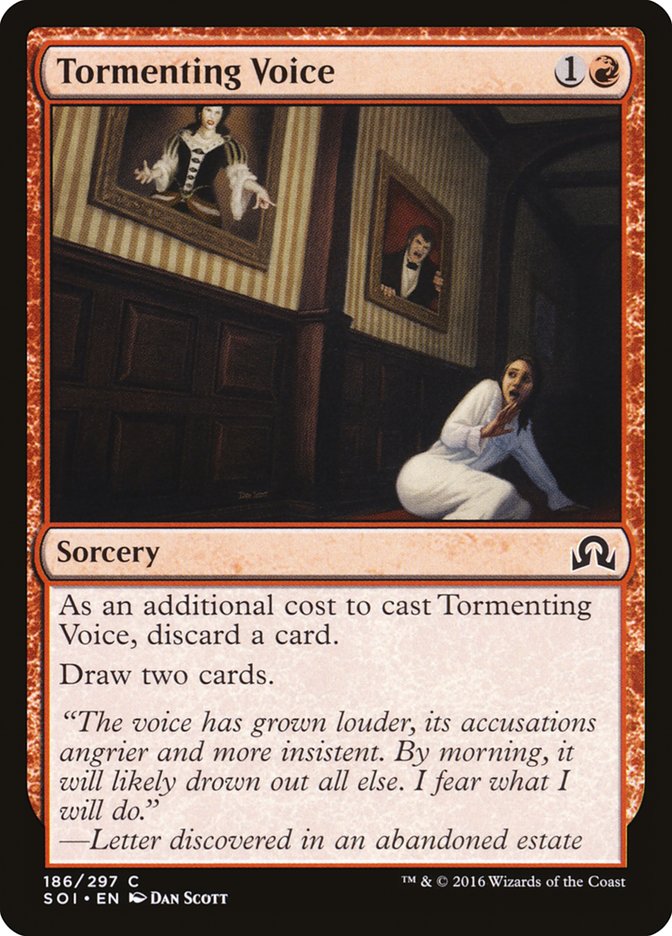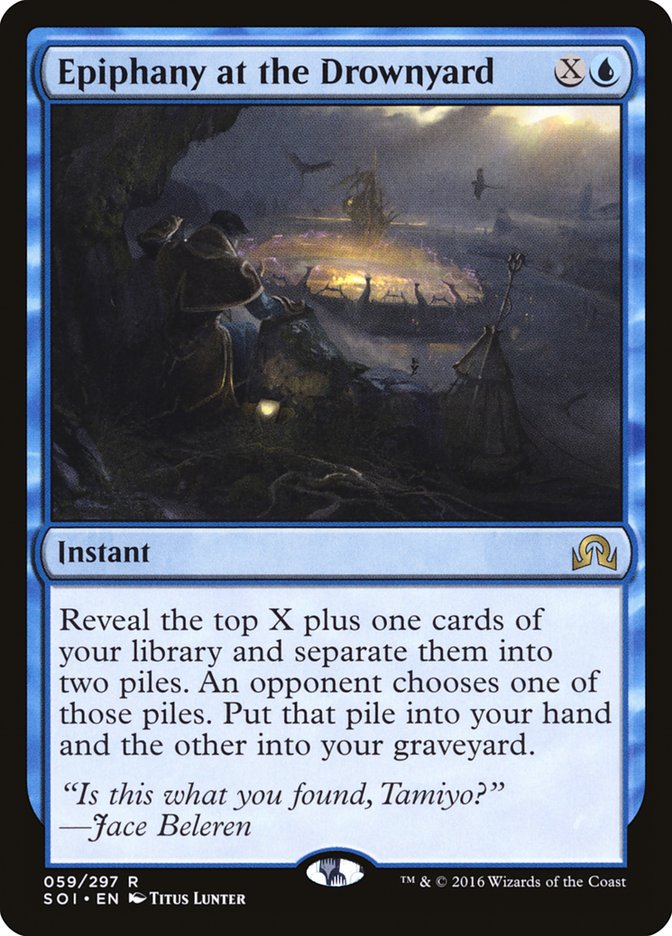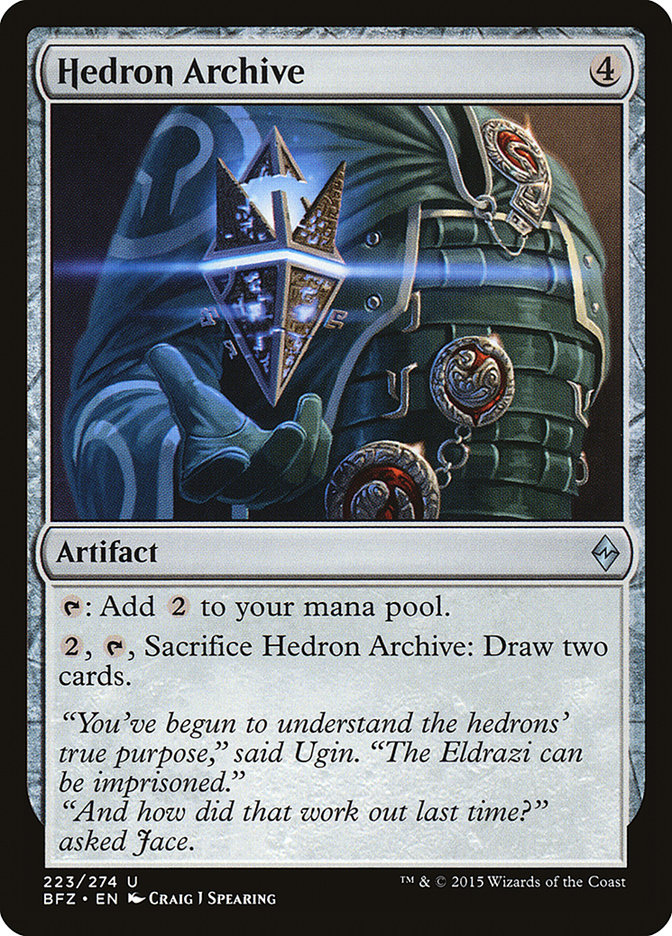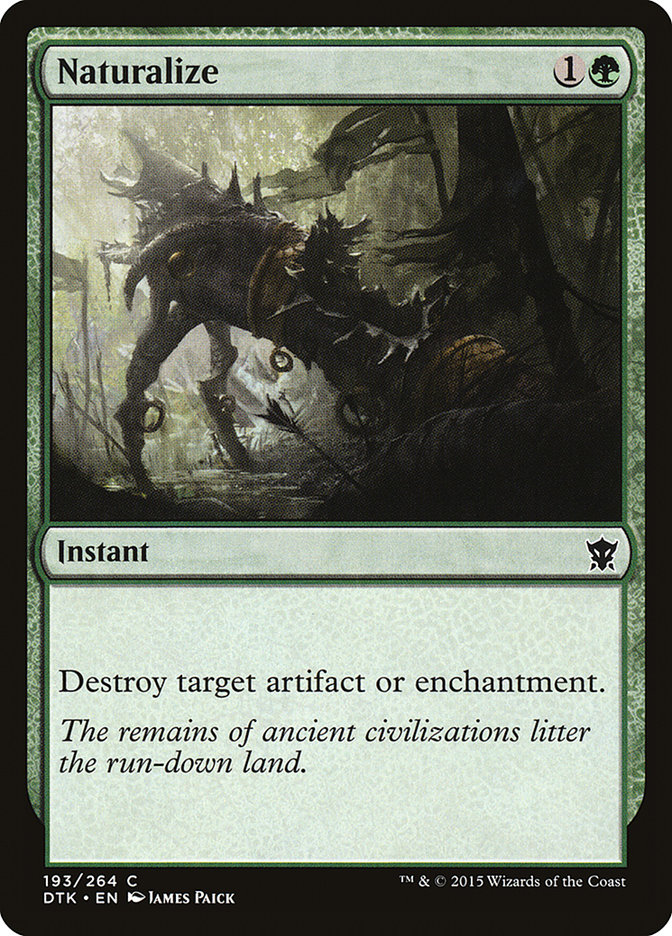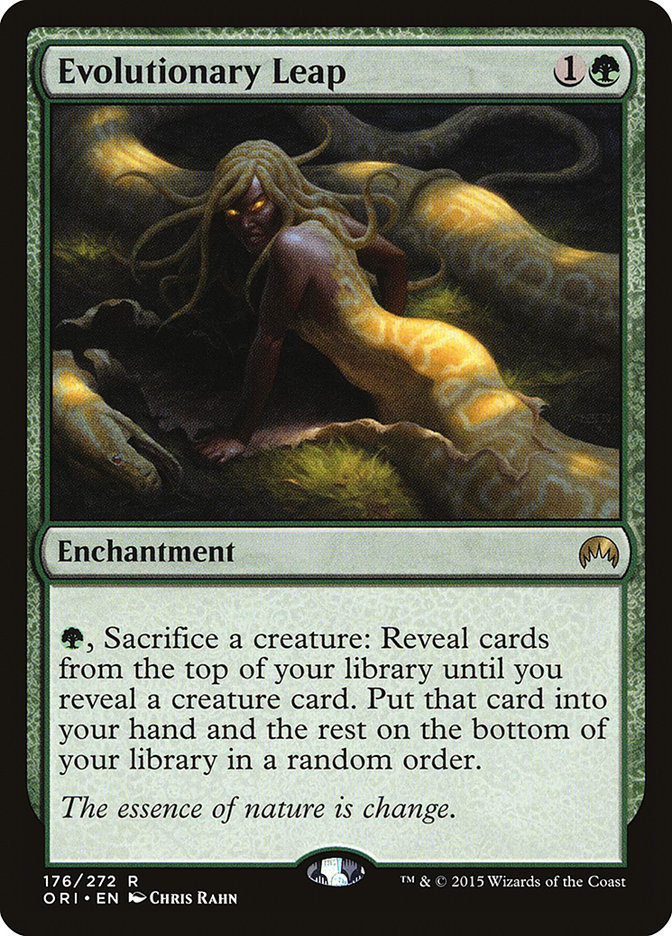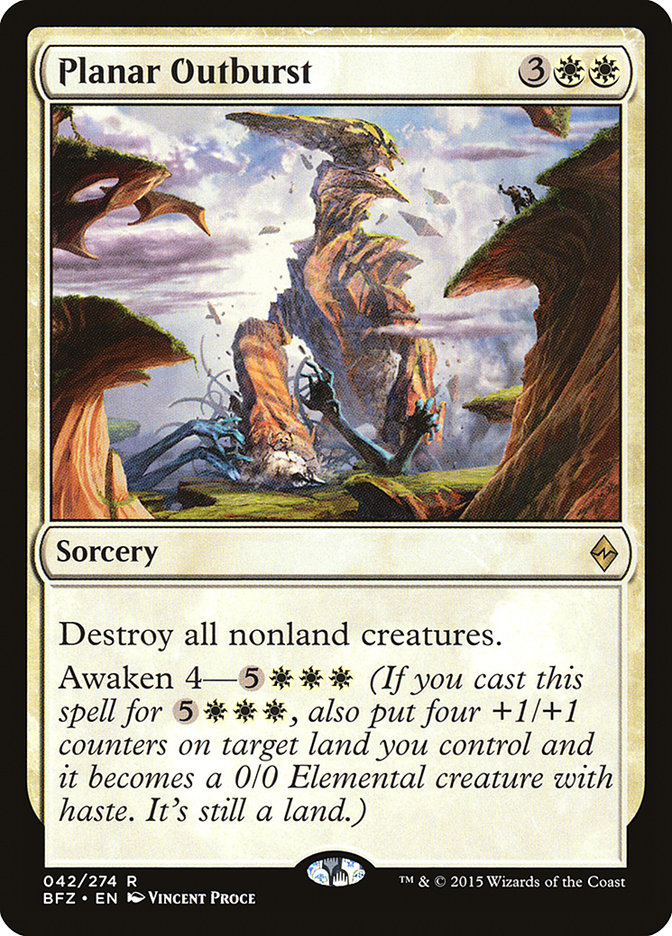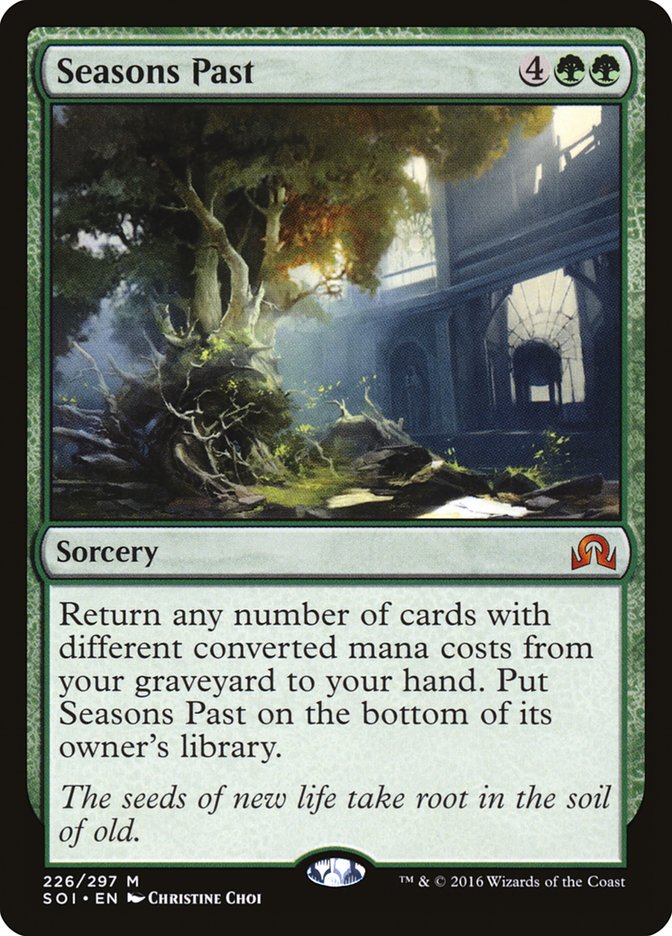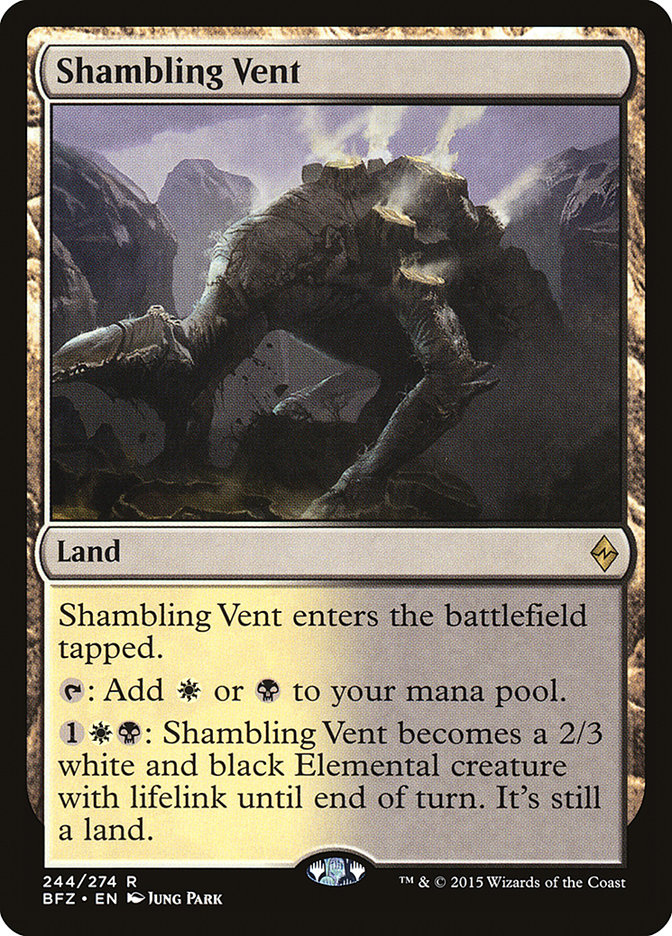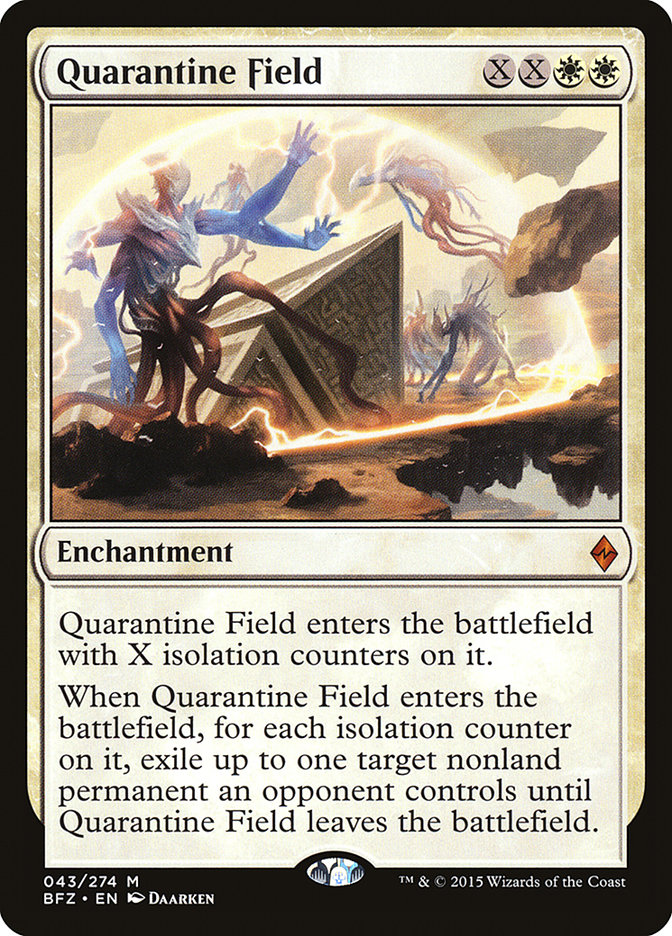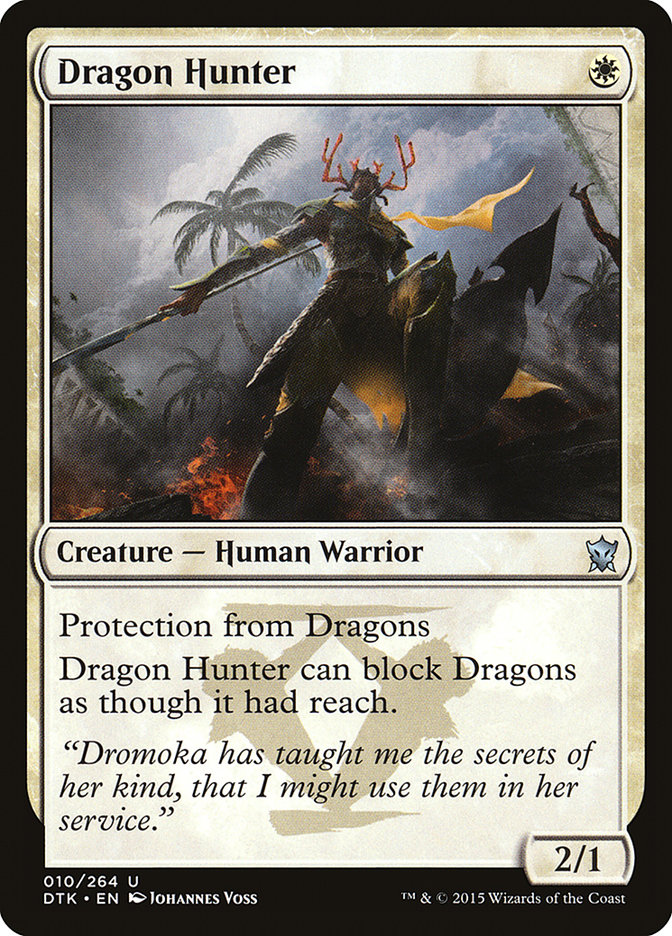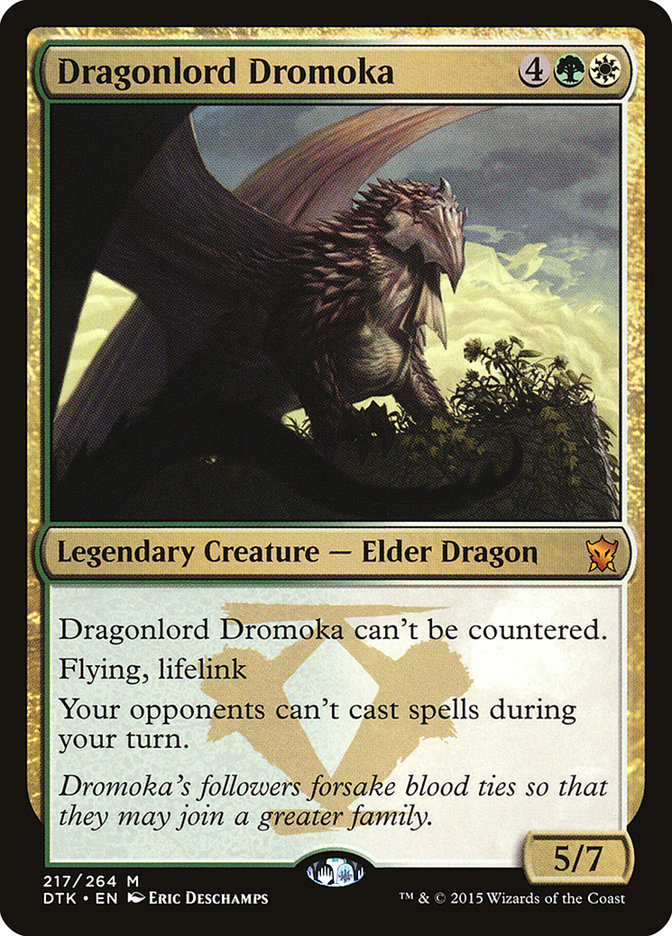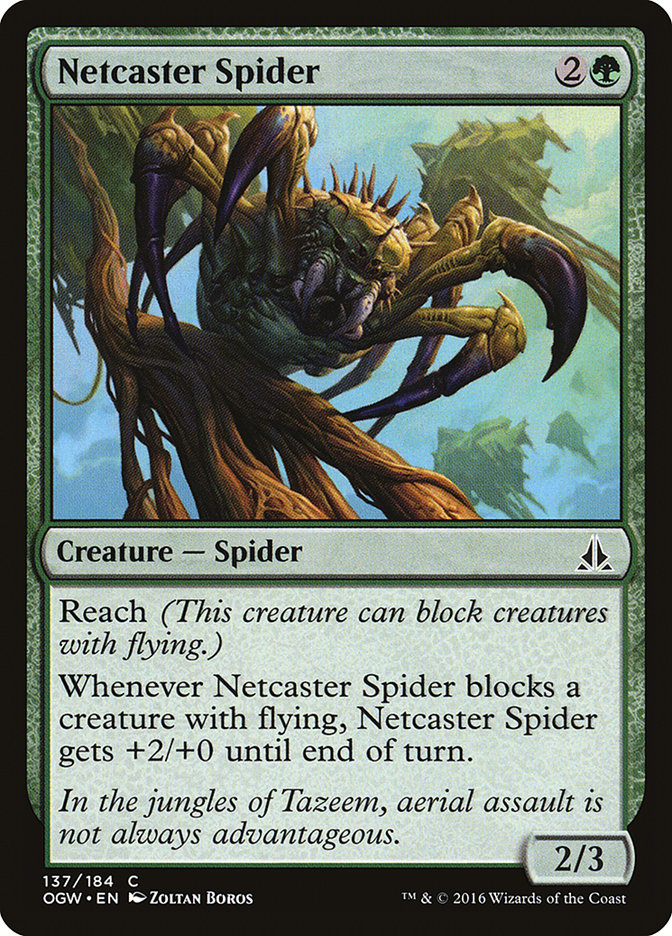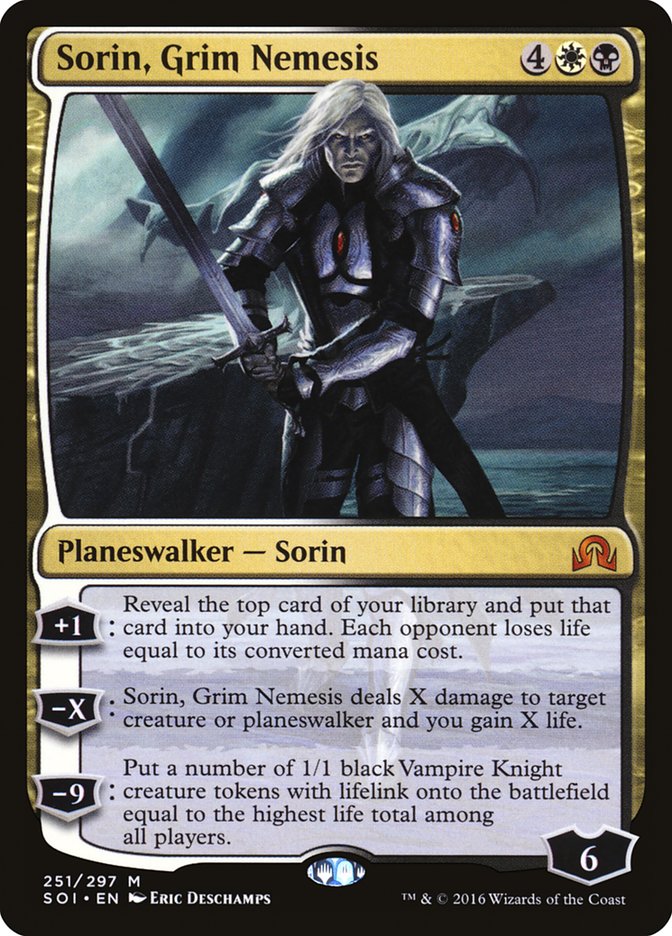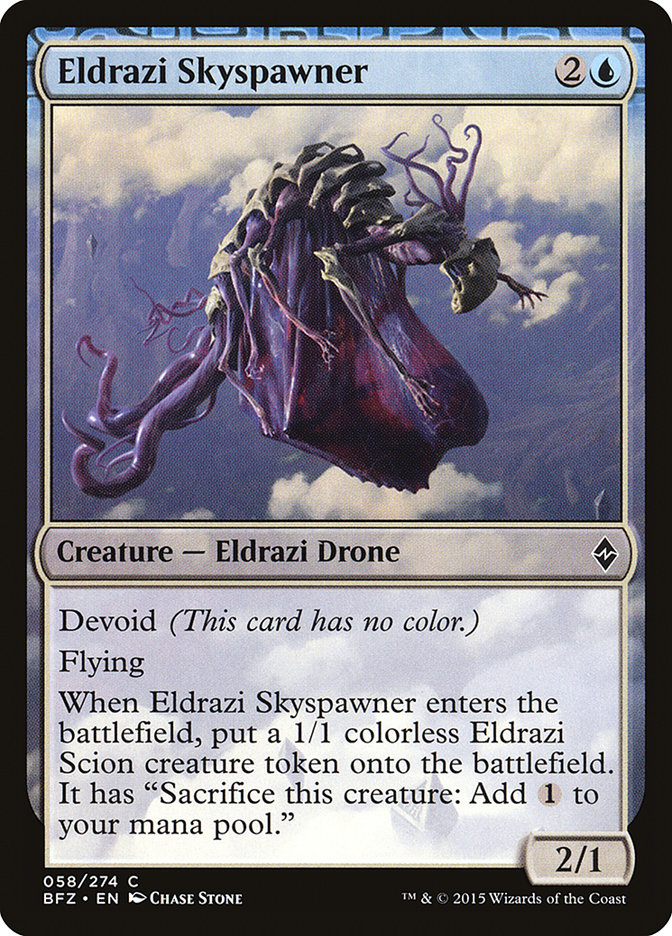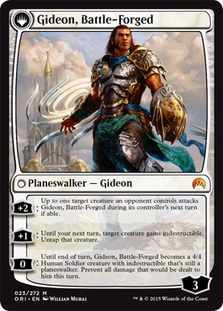Expectations Before the Event
G/W Tokens is the “best deck,” but it isn’t quite to the realm of dominating the way past midrange kings Cascade Jund and Caw-Blade were. It can be exploited. Its spells don’t necessarily play well from behind and it has limited G/W answers to things going over the top of it like Ulamog, the Ceaseless Hunger. I wouldn’t be surprised to see it put up great results, but someone is going to beat it this week.
I expect Humans to underperform. People will react to it winning #SCGATL and up their sweeper counts in the maindeck and sideboard. They will play removal that is cheaper and better against it. The cards in Humans are powerful, but the tools exist to beat it if you want to.
Day 1, Round by Round
Round 1:
B/G Control (Ben Stark) wins 2-1 vs. Mono-Red Eldrazi (Fred Lomangino)
We’ve seen Mono-Red Eldrazi a lot, so I’m going to focus on Ben’s unique twist on the G/B shell. I will say that I think Eldrazi Displacer is messed up enough that I think I would play W/R Eldrazi over Mono-Red.
Reason #49458 why white is so good in this format: all the cards that beat Hangarback Walker are white. Ben can use Kalitas, Traitor of Ghet or a removal spell plus Languish to handle a larger Hangarback Walker, but making that card actually good against my deck seems like a big problem when I could just play white cards.
In the middle of Game 1, a double block occurred on a Vile Aggregate with Tireless Tracker and Sylvan Advocate. Fred opted to kill Sylvan Advocate, but I think the general rule is to kill the card that grows and draws cards. It’s basically a planeswalker with power and toughness instead of loyalty.
Goldnight Castigator really feels awkward against the Sylvan Advocate and Tireless Tracker deck. Way too easy to take a million on the swing back. The Eldrazi forcing your opponent to sideboard out Ultimate Price is nice, but the card seems unexciting without the early pressure of the fliers deck. I’ve seen too many games just lost to its ability.
I hate Oath of Nissa in these B/G decks. In G/W you reliably get to select threats, specifically a threat that matters. In these control decks, you are so spell-heavy and creature-light, it’s just incidentally getting threats some of the time and is usually a land that costs mana.
Woodland Bellower looks great here. Sylvan Advocate and Tireless Tracker are unique options for it that are good to draw naturally. The only awkward part is taking the slot of the very splashable, very powerful Dragonlord Silumgar, though if everyone has maindeck Declaration in Stone in their G/W decks, that card loses a lot of ground to the pseudo-Mulldrifter / Broodmate Dragon action of Woodland Bellower.
Round 2:
G/W Tokens (Mat Bimonte) wins 2-0 vs. G/W Tokens (Peter Ingram)
Some people have tried to tell me the G/W Tokens mirror bogs down and takes forever, and I don’t get it. Planeswalkers are so snowballing, especially when Gideon, Ally of Zendikar and Nissa, Voice of Zendikar break sizing parity so easily. The exception has to be weird Ormendahl, Profane Prince mirrors, which can take literally forever due to 9/7s bouncing off each other.
I really was hoping Cedric Phillips’s question about Declaration in Stone on Ormendahl, Profane Prince was just another Clue token dagger setup. Sadly, it was a valid point about Declaration being one-sided, unlike Maelstrom Pulse or Detention Sphere. I still have no idea if the card is actually good in the mirror, as it is unplayable from behind against planeswalkers, but at the least it may be required to break up indestructible land threats.
Maybe things are slow because people just take forever to make their decisions. There aren’t necessarily that many turns before someone dominates, but positioning at a few key points is tricky, so everyone plays extremely carefully.
Nissa, Voice of Zendikar math feels like the kind of thing you should be actively focusing on learning if you play G/W Tokens. Just between going +1, -2, and blocking or not blocking, it can produce a wide range of game states, and knowing how to maximize them in common scenarios feels like a place to save a lot of mental energy.
Also worth noting: I don’t think people use the Emblem ability on Gideon, Ally of Zendikar nearly enough. When you are ahead but not heavy on creatures to pump, you clearly +1; when everything is cleared out, you 0 for a token; but I think that, in a lot of the spots where it isn’t clear and Gideon might be at risk, just getting the permanent pump is really good.
Game 2 of this match really shows the power of the Hangarback Walker combo with Archangel Avacyn. It isn’t even about building your own Flamebreak. It’s literally just about adding three damage and two power to your five-drop for no mana and killing multiple turns faster than just the 4/4 front side of Avacyn attacking.
Round 3:
W/R Humans (Tom Ross) wins 2-0 vs. Naya Midrange (Harrison Edwards)
I got nothing. Tom kept seven-card hands and curved out with Glorious Anthem effects. Harrison kept five-card hands and did some things that weren’t Radiant Flames. I did enjoy thinking about how crazy Needle Spires is with multiple Always Watching and Gideon, Ally of Zendikar Emblems, though.
G/W Tokens (Andrew Jessup) wins 2-1 vs. G/W Tokens (Alex Hon)
Archangel Avacyn and Avacyn, the Purifier fighting side-by-side is the most nonsense thing I’ve seen in Magic in a long time. I have so much respect for Wizards of the Coast for not pulling the trigger on a legendary Werewolf the first time around, just because this nonsense is exactly what we would have gotten from it.
I really like Alex’s Foundry of the Consuls. I keep being underwhelmed by Westvale Abbey’s return on investment with only a couple of Secure the Wastes, while making two fliers has to be good. Especially in the Naya Tokens deck with zero Secure the Wastes I played last week, I would consider playing the Thopter land over the Demon.
I didn’t like Evolutionary Leap in the mirror before watching Game 3 of this match, but I now understand how churning Hangarback Walkers makes it really hard for your planeswalkers to die. I’m not sold on multiple copies of the card, but the first has definite benefits.
Never feel bad about playing a face-up Den Protector early on when you need to bring the pain. G/W Tokens is especially good at incrementing the power on that beater, which makes it an actually evasive threat to pressure them or their planeswalkers in the mid-game.
Round 4:
U/R Eldrazi (Jim Davis) wins 2-1 vs. U/R Control (Caleb Scherer)
I’ve been really impressed with U/R Eldrazi playing against it. Drowner of Hope; Chandra, Flamecaller; and Wandering Fumarole close quickly, while you also have inevitability with Ulamog, the Ceaseless Hunger. Spawning Bed plus Drowner of Hope might actually be the most important interaction, allowing your land to emulate a Fog and often leave Scions left over to replace the mana.
Tormenting Voice is a card I was really impressed with early in the format but have come to dislike. It’s really good at tying together shakier manabases and decks, but it’s hard to take a turn off against G/W Tokens to play it. You can’t stabilize against a resolved Gideon, Ally of Zendikar with the red cards in the format if you weren’t ahead to start, and there just isn’t time to Tormenting Voice. In a two-color deck like Caleb Scherer’s, I struggle to figure out why he is playing the card, given the zero Pyromancer’s Goggles we saw across the games.
I despise Epiphany at the Drownyard in a lot of decks, but the big U/R deck might be a reasonable spot for it. You want a middling effect where Epiphany is actually okay (X equals three), you want a big mana sink where Epiphany is actually okay (X of seven or eight), and leaving up mana for Spell Shrivel or Clash of Wills is huge where the instant speed of Epiphany is okay. I’m not saying the card is great or even really good, but just reasonable enough to play a couple.
Hedron Archive is literally the most important card in the U/R Eldrazi deck. I came to the conclusion you want Angelic Purge post-sideboard out of G/W just to kill that card. You even get bonus points on targets if they go for Fevered Visions!
Jim’s sideboard is odd to me. I feel like Prophet of Distortion can’t possibly be the best version of that card just based on rate alone. Reality Smasher might be, but it’s really asking a specific question. Moving down the curve feels like you are admitting you can’t reliably Ulamog your opponent, as you are spending cards on non-mana, non-pseudo Time Walk counterspells. I guess Reality Smasher is probably the best card at pressuring planeswalkers, but in a lot of places, something wider like Pia and Kiran Nalaar would be better as you need to get defensive earlier.
Round 5:
W/B Control (Aaron Sorrells) wins 2-1 vs. G/W Tokens (Logan Mize)
Moving away from Nissa, Voice of Zendikar toward Elvish Visionary and Nissa, Vastwood Seer is definitely a fine angle for Logan to take, but I’m wondering if there aren’t other things that should radiate from it. For example, the big reason to be straight G/W is that you need to make GG on turn 3 and WW on turn 4 for Nissa into Gideon. Do we want a third color splash in this deck, even if it’s just for Lumbering Falls or Needle Spires? Note that is basically exactly what I was doing last week with Naya Tokens, albeit with less Evolutionary Leap chaining, which in turn makes Hangarback Walker much worse.
I will say that Logan’s slightly lighter application of pressure makes the W/B deck’s planeswalkers much better. Sorin, Grim Nemesis really runs away with a game if you let it start ticking up, though we already knew that from Nissa, Sage Animist winning games without the life loss clause.
It also means Logan’s deck is masterful at doing nothing and taking forever to win or lose a game. If you are worried about going to time with normal G/W Tokens, do not play this version of the deck.
Awaken plus Westvale Abbey does not work the way you want it to. The effect setting it to a 0/0 applies over the 9/7 when it transforms to Ormendahl, Profane Prince, making it just a 0/0 with the Awaken counters boosting it. Note that this is the opposite of Shambling Vent, where the new power and toughness setting temporarily overwrites the 0/0 of Awaken.
Another thing to play around in this format: don’t lose a Gideon, Ally of Zendikar to a Stasis Snare. Also, another drawback of Logan’s deck is that Gideon can pummel him pretty easily in the face of lighter early pressure.
Round 6:
G/B Aristocrats (Andy Ferguson) wins 2-1 vs. W/R Humans (Michael Letsch)
Shocking no one, Andy Ferguson shows up with Collected Company yet again. Shocking some people, he is comboing instead of just beating down.
No one-drops Game 1 with a seven-card hand out of W/R Humans? That means there’s a ton of Thalia’s Lieutenant and Always Watching on the way. Not sure if that’s an actionable piece of information for Andy there, but it’s definitely something that’s easy to deduce.
Similar to always killing the Tireless Tracker, always kill the Zulaport Cutthroat. If you are doing anything proactive that is capable of getting in the way of Nantuko Husk, it is really hard for G/B Aristocrats to win without multiple Zulaport Cutthroats on the battlefield. It’s almost to the point that in-hand Cutthroats need to be slowrolled until the combo turn to prevent them from dying.
Blisterpod is…. something. It’s so good at pretending it’s actually a physical piece of cardboard that matters on the battlefield. Don’t trick yourself into thinking it is; it’s just an enabler like Dark Ritual, except much worse.
Game 3 from Michael feels like exactly how you lose to Aristocrats. Trading off a threat that grows later, spending a mid-game turn using removal on a random creature (read: not Zulaport Cutthroat or Nantuko Husk), just giving Andy time to do things and bog the game down. I’m not sure he had better plays given how many lands he drew; I’m just stating this is not how you want your games to shape up here.
U/R Eldrazi (Jim Davis) wins 2-0 vs. Bant Company (Chris Fennell)
We tuned in just in time to watch Jim using and casting a bunch of six-drops, but hidden in Fennell’s graveyard is an Eldrazi Displacer. I actually really like that card in Bant Company right now, mostly because of how well it staves off an Avacyn, the Purifier sweep trigger out of G/W.
Round 7
W/R Humans (Tom Ross) wins 2-1 vs. Bant Company (Kevin Jones)
Typically this is called “giving them the business.” The Humans deck runs over anyone who doesn’t tell them to hold up at some point very early in the game.
Game 2 demonstrates why Bant Company had so many issues with Humans going into the Pro Tour. It’s hard to definitively break the game state open despite having slightly better creatures, even if you do get to parity. Eldrazi Displacer is a huge gain here, but without that card, you are exceptionally vulnerable to getting Gryff’s Booned right out of the game at many points where you are “in control.” Displacer prevented that from happening, but Tom made it last way longer than it should in Kevin’s ideal world.
G/W Tokens (Vincent Lanceford) wins 2-1 vs. G/W Tokens (Gerry Thompson)
There’s this weird middle ground with Hangarback Walker and Gideon, Ally of Zendikar where the Emblem makes it worse a lot of the time. Being a 1/1 instead of a 0/0 is the classic “Steve Rubin can’t transform Archangel Avacyn” issue. Shorting a token on an even-sized Dromoka’s Command fight is unfortunate at times. The really odd one is that sometimes it’s actually bad for Hangarback Walker to get to a 4/4 and survive an Avacyn, the Purifier trigger, as you want the tokens to hold off the 6/5.
Round 8
W/R Humans (Tom Ross) wins 2-0 vs. W/B Control (Aaron Sorrells)
Pro advice on beating Humans: draw a good seven and don’t miss land drops. Probably pro advice at Magic in general, but you get a lot more out of it in that matchup.
Abzan Seasons Past (Jeff Hoogland) wins 2-0 vs. Mardu Control (Teerawat Pratoomsri)
We stepped in too late to know if Teerawat had it, but the specific card that defines if Mardu has a chance here is Gideon, Ally of Zendikar. You need to steal games with that card and discard before the Seasons Past deck goes off in the late-game.
I have a lot of respect for Jeff’s shortcut game. I’m kinda shocked he has a draw in this event, playing at this pace.
The G/B Seasons Past deck feels like it gains a lot by adding Shambling Vent, especially with Sylvan Advocate. That’s a pairing that has seen shockingly little play in Standard for how well the cards play together.
G/W Tokens (Andrew Jessup) wins 2-0 vs. G/W Tokens (Vincent Lanceford)
Flying advantage seems to be a key deciding factor in these mirror matches. Part of that is pressuring planeswalkers, but a lot of it is just that Archangel Avacyn and Linvala, the Preserver kill so quickly. If only there were a Silklash Spider to retrump.
Round 9
G/W Tokens (Andrew Jessup) wins 2-0 vs. W/R Humans (Tom Ross)
Game 1 Andrew was on the play with a full curve but no three-drop. Tom Ross mulliganed; it looked close. The pre-sideboard configuration of G/W is really hard-pressed to fight against 2/1’s that grow to 3/2’s.
Getting mulliganed out of Game 1 with Humans is probably the worst thing that can happen to the deck. The fact that you are so far ahead in a lot of Game 1s and can then count on a lot of Game 3s on the play is a huge part of what the deck is good. This likely implies that slow or flooded draws in pre-sideboard games really have to go back, as the effect of keeping them radiates out much beyond just being down a game. The same likely applies to post-sideboard games on the play.
Day 1 Wrap
Things started off diverse but really narrowed down in the end-game to the known powerful decks. The metagame is about exactly what I expected, with G/W being the largest performer but not absolutely flooding the feature match area. W/R Humans appears to be performing better than I expected, but that might just be Tom Ross being Tom Ross.
The known good players also were all doing extremely well, which likely points towards being able to not walk into blowouts and having well-tuned decks and sideboards being huge in this format.
Day 2 Metagame
While G/W being at the top of the heap was very expected, the rest of the percentages were interesting. I’m not sure what I expected to be the second-most-successful deck, but for some reason it wasn’t Bant Humans, which is pretty silly, given it has had reasonable results lately. There is also less U/R than I expected, but that was more of expecting an underplayed deck to dramatically overperform and less a big metagame shift.
My expectations of a drop-off in Humans decks were wrong and you can easily see why here. Black midrange and control is basically nonexistent, so there just isn’t a deck that can add interaction to deal with it. Reckless Bushwhacker also pushes back hard against those strategies.
Day 2 Round by Round
Round 10
Abzan Seasons Past (Jeff Hoogland) wins 2-1 vs. G/W Tokens (Andrew Jessup)
Turn 2 Sylvan Advocate has to be one of the most important plays here from Jeff. You want to force the G/W into a state where combat and trades are occurring instead of one where you as the control player are falling slightly behind each turn by answering their planeswalkers after they activate. Of course, you do need more follow-up past that, as they will build over a single attacker eventually, which is what ended up happening to Jeff in Game 1.
Virulent Plague is a really good reason for Quarantine Field. Or at least it is now that the black-based control decks aren’t all out of planeswalkers the way they were at the very start of the format. Quarantine Field is definitely a better version of Angelic Purge in that spot. Of course, I can’t blame G/W players for skimping on answers here, as black in general has been on the downswing lately.
Kalitas, Traitor of Ghet is not great against G/W Tokens. It’s even worse if you also want Virulent Plague, which is really how almost all black decks handle the planeswalker part of G/W. I guess it’s a way to handle Hangarback Walker, but it feels like, especially in Abzan with white cards, you should have better ways to make that happen.
I really like Jeff’s direction with this deck. W/B and G/W are both really powerful decks that have a lot of overlap in terms of strategy and cards, and Jeff is working in that overlap. He is a little lighter on beaters than I initially would be, but there are so many good cards that part of the draw is being able to personalize for each week or style. Note that this archetype is historically loose against Bant Company decks, or at least it was in Pro Tour testing, so if things swing back around, I would stay away.
Round 11:
Abzan Seasons Past (Jeff Hoogland) wins 2-1 vs. W/R Humans (Tom Ross)
As Tom curves out and crushes Jeff Game 1, I’m left thinking about what specific things made white aggro so good this year when we tried and failed to make it work for the last couple of years. This is partly pointless theorycraft but partly relevant moving forward for figuring out early if similar decks will be good.
Most of it has to do with creature sizes shifting down to meet the rising Anthem effects that Humans received in Shadows over Innistrad. Your dorky Expedition Envoys regularly trade for or run over three-cost creatures, whereas previously they looked silly against Sylvan Caryatid or Frostburn Weird. This is the opposite of some previous white aggro decks like Return to Ravnica G/W and Lorwyn Kithkin where they just had individual powerful cards that happened to be white aggro cards. Lesson learned: play white beatdown when the individual white beatdown cards are great or when their one-drops can brawl effectively into the midgame.
Game 2 was a close one, but Game 3 really illustrated how you can beat white aggro. Languish is a big part of it, but there do exist big creature threats that trump their entire deck. Tom was able to handle the Kalitas, Traitor of Ghet, but the Dragonlord Dromoka after just ended it. You can’t afford to play these when super-behind as you will just die to removal, but if you can keep things remotely stable, these are the cards you need to shut down the game. With Humans moving toward explosive combo-esque plans against sweepers with Reckless Bushwhacker, you can’t even rely on sweeping them twice to win the game. These big finishers are becoming more and more important to seal out games that would otherwise be in jeopardy.
Round 12
W/R Humans (Charles Gindy) wins 2-1 vs. Bant Humans (Courtland Strodl)
Gindy won the die roll. Courtland missed an early drop. Guess what happened. Oh, also, all of Courtland’s creatures are the same size as the attacking W/R Humans creatures or smaller.
Wait, what? This game is still going? Enough Reflector Mages do extend things, but again we saw the Bant deck not having a way to turn the corner. No real trump, just small creatures.
Another issue with these Bant decks is being terrible against Gryff’s Boon. Just having more copies of Archangel Avacyn goes a long way in protecting against dying in the air, not even counting G/W’s ability to make Hangarback Walker tokens at times.
This matchup isn’t as unwinnable for Bant as I make it sound, but it’s bad. I think a lot of the early success of Bant had to do with people not understanding how to build Humans decks, whereas now almost everyone is land-light and heavy on Gryff’s Boon.
Round 13
G/W Tokens (Gerry Thompson) wins 2-0 vs. B/G Control (Ben Stark)
Lesson 1: Don’t miss land drops against Gideon. Actually, missing land drops in this format is very bad in general as the threats all hit so hard. Don’t cheat on lands in deckbuilding, especially if you can play creature-lands. This also matters if you are allied colors as additional basics enable your Battle lands and Shadow lands (if you are unfortunate enough to need to play the latter).
Lesson 2: As Cedric Phillips mentioned, making threats is how these control decks have to win against G/W going long. Not only are creatures key in preventing runaway planeswalkers, but you can’t beat Evolutionary Leap with removal.
Woodland Bellower did look good when it was cast, but Ben fell a little flat after that and it really showed. These black decks have the classic midrange issue of drawing the wrong mix of answers and threats, which is why I really think Read the Bones and Tireless Tracker are so important.
Gerry having Planar Outburst here came completely out of left field. It kinda makes sense with Ben’s creatures being easily brick-walled by planeswalker tokens, meaning you can completely rout Ben trying to slowly chip away at loyalty counters. I would be super-hesitant to get defensively tricky against Ben’s deck if he had Seasons Past to go over the top, but this deep into the event it seems Gerry knows he is just in a normal midrange mirror where his opponent has fewer planeswalkers to dodge a sweeper.
We’ve seen a lot of conservative play with Archangel Avacyn from Gerry and Andrew Jessup at this event. I’m not sure how often it is right, but consider that the “counter a removal” or “totally brick your opponent’s combat step” modes of a threatened Avacyn may be worth more over multiple turns of leaving it up than just the Serra Angel body.
Note that you can cast Archangel Avacyn in response to a Grasp of Darkness to ensure a transform trigger when you want a giant threat. I don’t remember if it was in this match or an earlier one, but that’s a cool way to really press ahead.
Round 14
B/G Control (Ben Stark) wins 2-0 vs. Bant Company (Chris Fennell)
One interesting thing about adding Eldrazi Displacer to Bant Company is that, in these infinitely long games, old Bant Company often had issues closing out through a jammed-up battlefield. It only had a limited number of Reflector Mages to break through with, and once it used them all, a 4/5 on the ground held things off just a little too well. Eldrazi Displacer lets it really do something that breaks through these nonsense games.
You can miss land drops against this B/G Control deck and still win, even in a very mana-sensitive deck like Collected Company. This is why I liked W/B Control so much, as Gideon, Ally of Zendikar just punishes bad draws so hard.
Woodland Bellower oddly flips the script on Company of pushing ahead on the battlefield and really lets Ben’s deck turn the corner and start attacking. It seems really impressive here, especially when the card I mentioned it replacing earlier would not have been good. Dragonlord Silumgar is horrible against Reflector Mage.
Round 15
G/W Tokens (Gerry Thompson) wins 2-0 vs. Abzan Seasons Past (Jeff Hoogland)
It’s interesting how much closer these games look when both sides of the match really play the removal lineup game. In part it’s Jeff making good plays with his removal and in part Gerry playing for a longer game where there are fewer chances for runaway threats but more value gained in the face of each answer.
This also may explain why his G/W matches take longer: Gerry just generally aims to plays longer value games. He loses less to single cards but likely has to work much harder when his opponents use the extra time to draw chains of varying cards out of mediocre spots.
Yet again, missing lands is horribly brutal in this format. There are just too many really powerful threats at four and five mana, which is a tick up on the curve compared to where land drops are “guaranteed,” and many of them planeswalkers that are absurd when your opponent stumbles and terrible when played from behind. Again, play more lands.
Naya Midrange (David Bollenback) wins 2-1 vs. B/G Control (Ben Stark)
David Bollenback sideboarding into Lambholt Pacifist here seems borderline, but most of that is Ben’s specific list being much more proactive than the traditional B/G Control deck. The card is really good as a virtual two-mana 4/4 against a lot of slower decks, but Game 3 on the draw against Ben, it seems likely to get stuck as a 3/3. The counterpoint to this is that Ben’s proactive cards get brick-walled by the 3/3 body in the mid-game, when presumably having the blocker around lets your planeswalkers take over unopposed. It could easily be a case where you want two or so copies to increase your early-game play count.
I just realized you can Woodland Bellower for Netcaster Spider to block Archangel Avacyn. I then realized it isn’t good and that putting it in this article without a disclaimer is irresponsible of me.
I forgot how awesome Chandra, Flamecaller is because she is so awkward against Archangel Avacyn and Sylvan Advocate. Whenever you get to +1 or +0 her profitably, the game is almost immediately over, not that the same isn’t true with the –X as well.
Four-Color Rite (Danny Jessup) wins 2-1 vs. G/W Tokens (Cody Minnix)
Danny made the following play with about a minute on the clock: Tank. Cast Nissa. Search for a Forest. Play the Forest. Cast Eldrazi Displacer. Pass the turn. That’s the kind of shortcut game that costs you draws. When in that spot, you should have both three-drops on the battlefield and your opponent untapping while you find your land. It’s very possible that 30 seconds cost him a turn that was very close to costing him the match.
Top 8
As expected, G/W was generally pushed back this weekend at the top tables…besides Gerry, who really shouldn’t count. I’m shocked to see a Cryptolith Rite deck do well, considering the direction G/W was moving and what I expected to pop up to beat it, but Danny’s choice of Dragonlord Atarka and Nahiri, the Harbinger makes his deck a little more raw power and a little less engine.
Quarterfinals
Abzan Seasons Past (Jeff Hoogland) wins 2-0 vs. Four-Color Rite (Danny Jessup)
I would say Danny got unlucky to play against the one Languish deck in the quarterfinals, but I’m not sure the rest of the Top 8 is his cup of tea either. Combo Four-Color Rite was bad against Humans and U/W Fliers has to be a problem too, which leaves his “good matchups” at Gerry on G/W and the one Naya deck.
Cool flavor thing I just noticed: Sorin, Grim Nemesis established first and allowed to +1 kills Nahiri, the Harbinger and barely survives, but Nahiri getting the first +2 makes it a clean trade. As per the story, it’s an even match unless Sorin has home-field advantage.
Despite it attacking for lethal earlier for Danny, Loam Dryad is possibly less of a Magic card than Blisterpod. One of the biggest upsides to Nahiri, the Harbinger has to be discarding that card when you draw it after turn 1.
Reality Smasher looked like an issue for Jeff’s deck, except he had multiple planeswalkers that survived the first attack and then cast another mythic rare threat in Linvala, the Preserver. Don’t miss land drops against five-drop planeswalkers either.
W/U Aggro (Brennan Decandio) wins 2-1 vs. G/W Tokens (Gerry Thompson)
To aside to another match, Craig Krempels mentioned that the Naya deck got much better against Humans post-sideboard. I can confirm: Radiant Flames is a beating.
Evolutionary Leap in the W/U Aggro matchup makes a lot of sense despite being a “do-nothing.” You need to pop those Hangarback Walkers into tokens somehow to block those fliers.
Finally, looking at the list, this W/U deck looks pretty nice. Probably not great against Humans, but the per-card power level is really high. You even have the Eldrazi Skyspawner plus Archangel Avacyn combo that has kinda been forgotten after some initial hype related to Bant Company.
Semifinals
W/R Humans (Tom Ross) wins 2-1 vs. Abzan Seasons Past (Jeff Hoogland)
I’m finally noticing it, but Jeff’s mana is awesome and pain-free. I think I’ve seen him take one or two damage from it all tournament. Even W/B Control’s mana costs life, which makes this Abzan deck’s mana more shocking (or “unshocking”).
If you are ever worried about Languish with Humans, just draw and transform Kytheon, Hero of Akros on turn 3. Foolproof plan.
“All three games Tom has just had the draw.” Tom’s deck is all one-drops. All draws with an Anthem and spells are “the draw.”
Tom has to be Cedric’s favorite person in the room. As I write this, he won his semifinals at 7:10pm and was really the only person who could end this event before the 8:00pm Game 7 tip-off.
Naya Midrange (David Bollenback) wins 2-0 vs. W/U Aggro (Brennan Decandio)
Dragonlord Dromoka looked nice here. I’m kinda shocked that cycle didn’t dominate the format more given how strong they all are, but they were merely good, not Titan level.
Finals
W/R Humans (Tom Ross) wins 2-1 vs. Naya Midrange (David Bollenbock)
Thalia’s Lieutenant gets better in multiples. Tom Ross is a hero to all the Kinsbale Cavaliers out there.
7:58pm. Tom Ross is Cedric’s hero. Of course, Tom Ross is many people’s hero and probably already was Cedric’s hero, but I think this counts as another heart rightfully earned.
Takeaways
Tom Ross is definitely better than you. That includes the “me” part of “you” right now too.
G/W can be broken. It has clear-cut weaknesses, as I stated earlier. Humans can be broken, but so far no one has done that the last couple of weeks. Jeff Hoogland came close to cracking the whole thing open, but you can’t expect to win every match against such powerful opposing cards. Importantly, Jeff showed there is room to still discover things in this format. The synergies aren’t so tightly tied to large card sets that your deck is massively on-theme, and the individual cards are strong enough that you can move them around between archetypes to try and find new things to do.
The blowout format I described earlier in the season has changed a bit. A lot of the huge ones have been built around, namely with Sylvan Advocate and planeswalkers being more prevalent in the face of Chandra, Flamecaller. There are still a ton of blowouts that you have to consider, but the current decks are much better-suited to playing around them. The card pool has narrowed, but the games are much better to watch and you can see good players being rewarded for smart play over long events.



